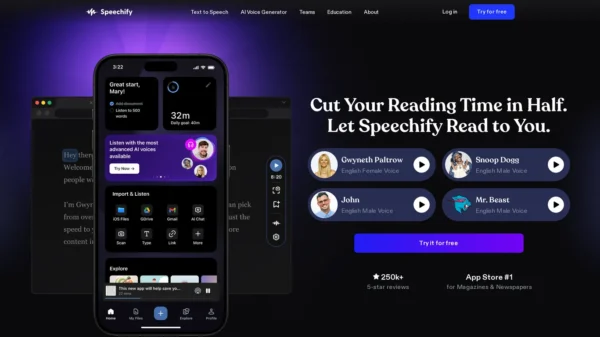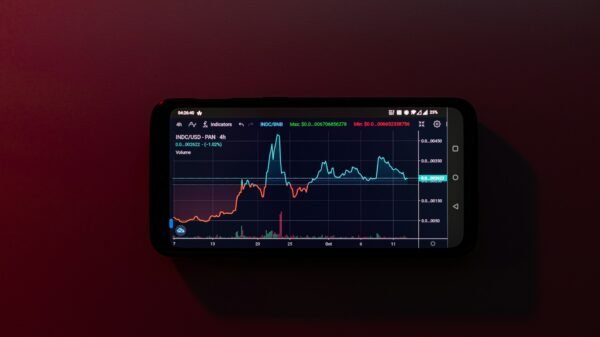In today’s digital world, mobile applications have become integral to our daily lives. From communication and entertainment to shopping and productivity, mobile apps cater to nearly every aspect of modern living. As the demand for innovative and efficient mobile apps continues to grow, so does the need for skilled developers who can create user-friendly and robust applications. This article provides a comprehensive overview of mobile app development, covering its importance, types, development processes, and the future of this dynamic field.
1. Importance of Mobile App Development
Mobile app development plays a crucial role in connecting businesses with their customers and enhancing the user experience. With billions of smartphone users worldwide, businesses have recognized the potential of mobile apps to engage users, boost brand loyalty, and drive revenue. Mobile apps offer several advantages:
- Improved User Engagement: Apps provide a direct channel of communication between businesses and customers, allowing for personalized interactions, push notifications, and updates that enhance user engagement.
- Increased Accessibility: Mobile apps enable users to access products and services anytime and anywhere, improving convenience and accessibility.
- Enhanced User Experience: Unlike mobile websites, apps offer faster loading times, smoother navigation, and offline access, resulting in a better user experience.
- Revenue Generation: Apps can be monetized through in-app purchases, subscriptions, advertisements, and more, offering multiple streams of revenue for businesses.
2. Types of Mobile Applications
Mobile applications can be broadly classified into three types: native apps, web apps, and hybrid apps. Each type has its own set of characteristics, advantages, and limitations.
- Native Apps: These apps are built specifically for a particular operating system, such as iOS or Android, using platform-specific programming languages like Swift or Kotlin. Native apps are known for their high performance, smooth user experience, and full access to device features (such as camera, GPS, and notifications). However, they require separate codebases for each platform, leading to higher development costs.
- Web Apps: Web apps are essentially mobile-optimized versions of websites that can be accessed through a web browser. They are built using standard web technologies like HTML, CSS, and JavaScript. While web apps are cost-effective and easy to maintain since they use a single codebase, they are limited in functionality and may not provide as seamless an experience as native apps.
- Hybrid Apps: Hybrid apps combine elements of both native and web apps. They are built using web technologies but are wrapped in a native container, allowing them to be deployed across multiple platforms. Hybrid apps offer a balance between performance and development costs, making them a popular choice for businesses looking to target both iOS and Android users.
3. The Mobile App Development Process
Developing a mobile app involves several stages, from conceptualization to deployment and maintenance. Understanding these stages is essential for ensuring a successful app launch.
a) Idea and Conceptualization
The development process begins with the conceptualization of the app idea. This stage involves identifying the target audience, defining the app’s purpose and functionality, and conducting market research to assess competitors and understand user needs. A well-defined concept helps in creating a clear roadmap for development.
b) Design and User Experience
Design plays a critical role in mobile app development. A visually appealing and intuitive user interface (UI) can significantly enhance user experience (UX). Designers create wireframes and prototypes to outline the app’s layout, navigation, and functionality. The goal is to create a user-friendly design that aligns with the app’s objectives and provides a seamless experience.
c) Development
The development stage involves writing code to build the app’s functionality. Developers use various programming languages and frameworks, depending on the type of app being created (native, web, or hybrid). This phase includes frontend development (user interface and user experience) and backend development (server-side logic, database integration, and APIs).
d) Testing
Testing is a critical phase in the app development process. It involves identifying and fixing bugs, ensuring that the app performs well across different devices and operating systems, and verifying that it meets all functional requirements. Various types of testing are conducted, including functional testing, usability testing, performance testing, and security testing.
e) Deployment and Launch
Once the app is thoroughly tested and ready for release, it is deployed to the relevant app stores (such as the Apple App Store and Google Play Store). The deployment process includes preparing app store listings, creating promotional materials, and adhering to each platform’s guidelines. After launch, it is essential to monitor the app’s performance, gather user feedback, and make necessary updates.
f) Maintenance and Updates
Post-launch, regular maintenance is required to ensure the app remains functional and secure. This includes fixing bugs, updating app features, and ensuring compatibility with the latest operating systems and devices. Regular updates also provide an opportunity to introduce new features, improve performance, and enhance the user experience.
4. Tools and Technologies for Mobile App Development
Several tools and technologies are available to facilitate the development of mobile apps. The choice of tools depends on the type of app, the target platform, and the development team’s expertise. Some popular tools and frameworks include:
- Flutter: A UI toolkit from Google for building natively compiled apps for mobile, web, and desktop from a single codebase. It uses the Dart programming language and is known for its fast development and expressive UI components.
- React Native: A popular open-source framework developed by Facebook that allows developers to build cross-platform apps using JavaScript and React. React Native offers native-like performance and the ability to share code across platforms.
- Xamarin: A Microsoft-owned framework for building native apps for iOS, Android, and Windows using a single C# codebase. Xamarin offers native performance, access to device features, and a shared codebase for multiple platforms.
- Swift and Kotlin: The primary programming languages for iOS and Android app development, respectively. Swift is used for developing native iOS apps, while Kotlin is the preferred language for Android apps.
5. Future Trends in Mobile App Development
The field of mobile app development is constantly evolving, driven by advancements in technology and changing user preferences. Some key trends shaping the future of mobile app development include:
- 5G Technology: The rollout of 5G networks will enable faster data speeds, reduced latency, and enhanced connectivity, allowing for more immersive and responsive app experiences. Apps will be able to handle more complex features, such as augmented reality (AR), virtual reality (VR), and real-time video streaming.
- Artificial Intelligence and Machine Learning: AI and machine learning are transforming mobile apps by enabling personalized experiences, chatbots, predictive analytics, and enhanced security features. These technologies will continue to play a significant role in app development.
- IoT Integration: The Internet of Things (IoT) is expanding rapidly, and mobile apps are increasingly being developed to interact with IoT devices. Apps that can control smart home devices, wearables, and connected cars are becoming more prevalent.
- Augmented and Virtual Reality: AR and VR technologies are gaining traction in mobile app development, particularly in gaming, retail, education, and healthcare. These technologies provide immersive experiences that engage users in new and innovative ways.
Conclusion
Mobile app development is a dynamic and rapidly evolving field that plays a pivotal role in shaping the digital landscape. With the growing demand for innovative and user-friendly apps, developers must stay abreast of the latest trends, tools, and technologies. By understanding the importance of mobile app development, the types of apps, the development process, and future trends, businesses and developers can create successful apps that meet the needs of their users and stand out in a competitive market. As mobile technology continues to advance, the potential for new and exciting applications is limitless.







































































Pingback: Shielding Yourself from Online Threats: The Importance of VPNs